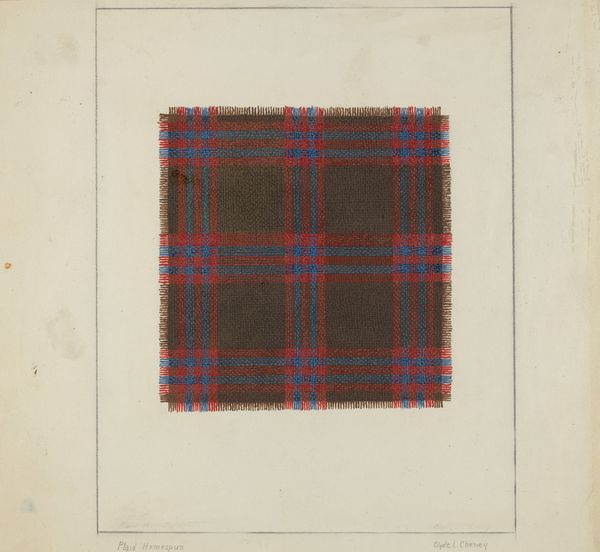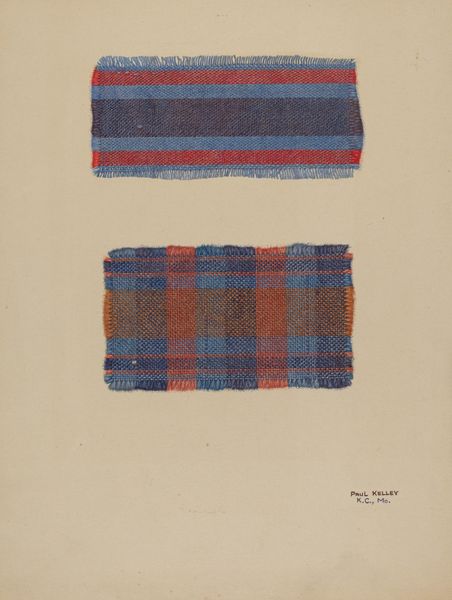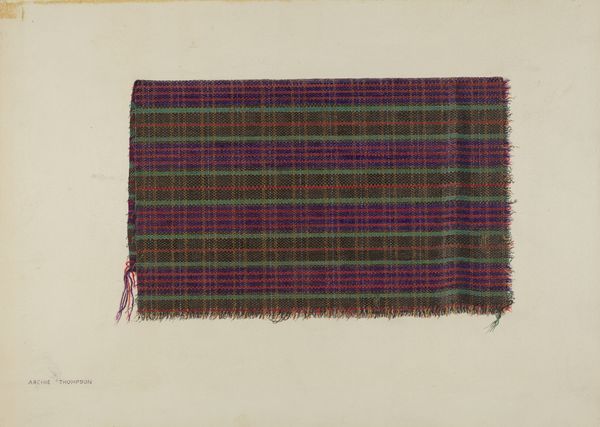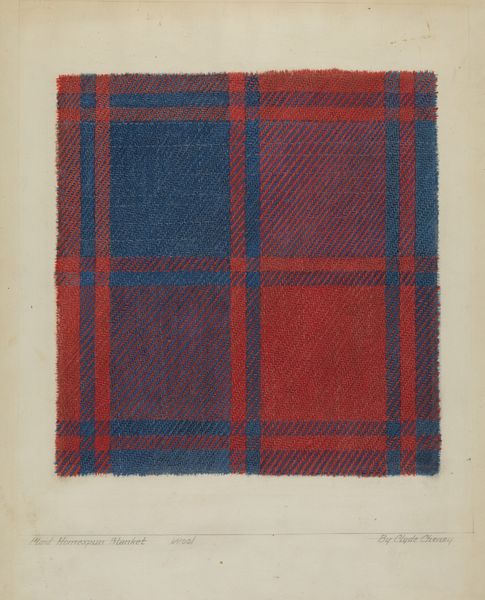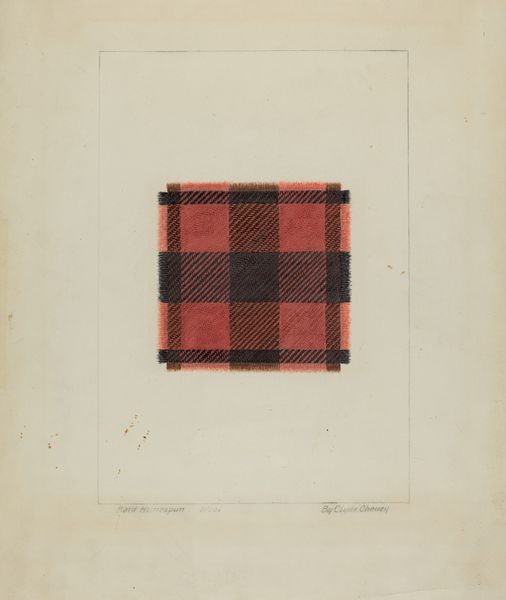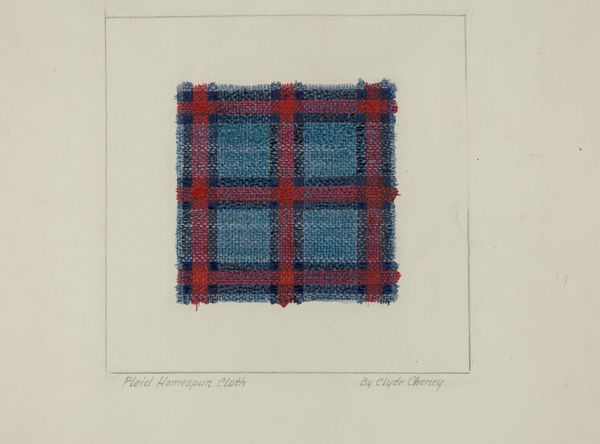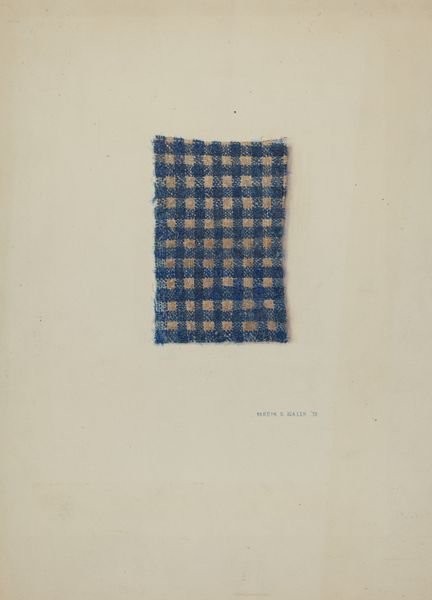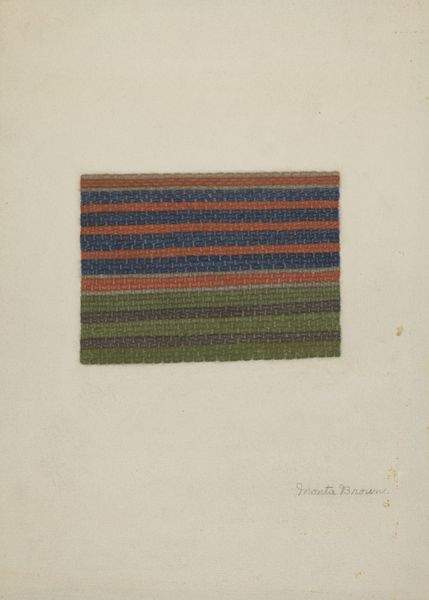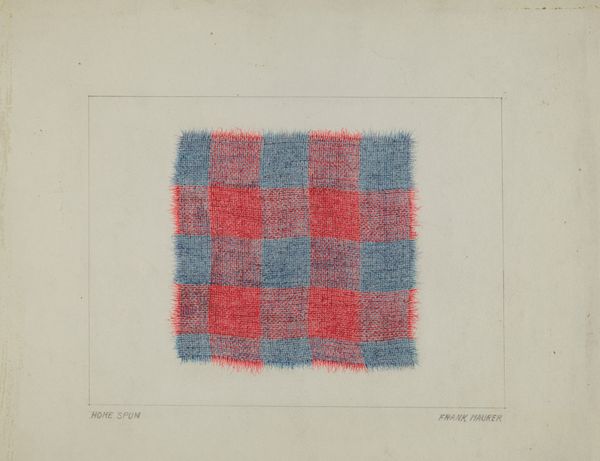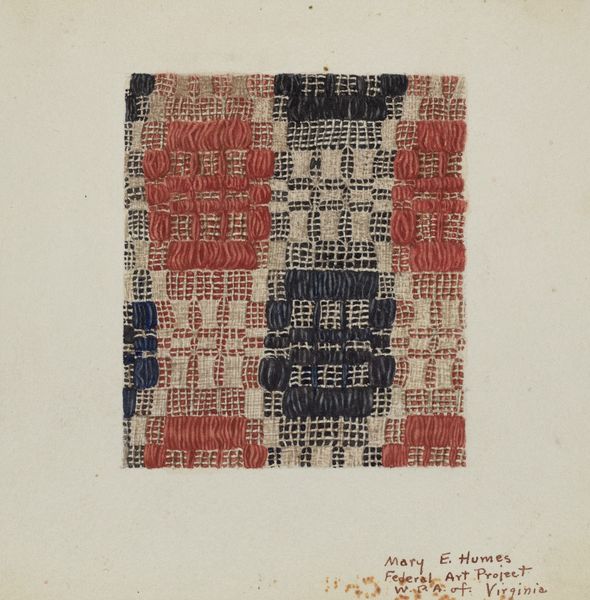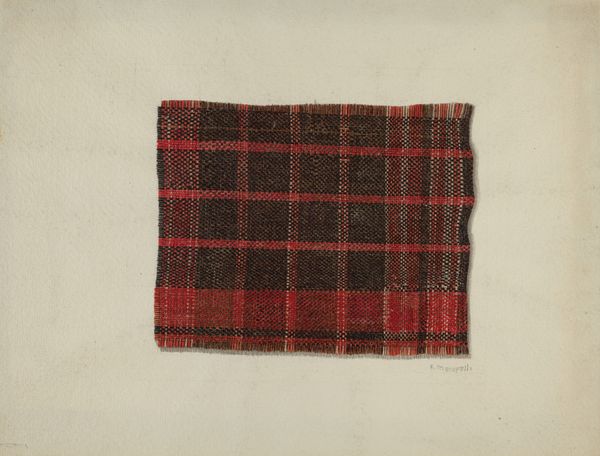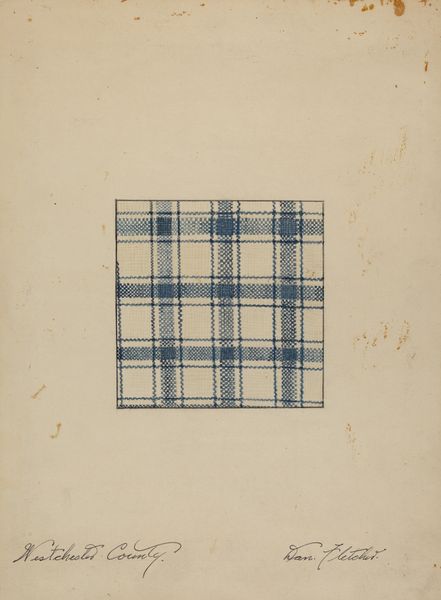
drawing, mixed-media, textile, watercolor
#
drawing
#
mixed-media
#
water colours
#
textile
#
abstract
#
watercolor
#
watercolor
Dimensions: overall: 23.8 x 32.1 cm (9 3/8 x 12 5/8 in.)
Copyright: National Gallery of Art: CC0 1.0
Curator: It feels very grounded. Seeing this tiny fragment of a textile makes me think about home, hearth, something deeply familiar, yet slightly out of reach in this abstract form. Editor: I can understand that reaction. We’re looking at a "Textile Sample" from around 1938 by Paul Kelly. The work incorporates drawing, mixed-media, and watercolor on a textile base—a study, if you will, rather than a final product. Curator: The colors too—a mix of muted reds, blues, and greens—evoke a certain era. Almost like a faded memory, the colors give the impression of the past, the intersection giving me a strong sensation. What sort of tradition might this pattern be pulling from? Editor: That is what is very exciting about an artifact like this—the cultural touchstones! The date places it firmly within the late interwar period, right? With the rise of abstraction, the grid becomes almost a universal language. Was this a pre-cursor to some artistic project, I wonder, or simply color play? Curator: Absolutely. The grid here isn't just a pattern, but something more foundational, and maybe the grounding sensation from it is a cultural feeling and knowledge of textile design and its purpose through many different cultures and times. Even this little snippet radiates tradition in an extremely abstract way. Editor: That's an insightful connection. As a sample, its context is key. What was the textile meant for? Was this for fashion, interior design? The broader societal need dictates its purpose and therefore, influences how we consider its value as art today. A tiny unassuming fragment holds the weight of intent. Curator: Yes, it transforms a functional swatch into something deeply evocative. This interplay, the pushing and pulling between utilitarian design and pure emotional resonance, gives it its evocative power. To feel such deep ties with so little design creates wonder. Editor: The transformation of the ordinary is what fascinates me most here, too. Examining what it reflects about 1930s aesthetics and design is intriguing. It encourages us to rethink design and its place in history as more than mere commercial or domestic choices. Curator: Absolutely! What a simple design is capable of demonstrating about cultural connection. It invites us to ponder what visual artifacts, even seemingly insignificant ones, convey and continue to perpetuate about identity. Editor: Precisely. And understanding that relationship is the heart of this visual experience, an era frozen in woven color, form and pattern for a better understanding.
Comments
No comments
Be the first to comment and join the conversation on the ultimate creative platform.
